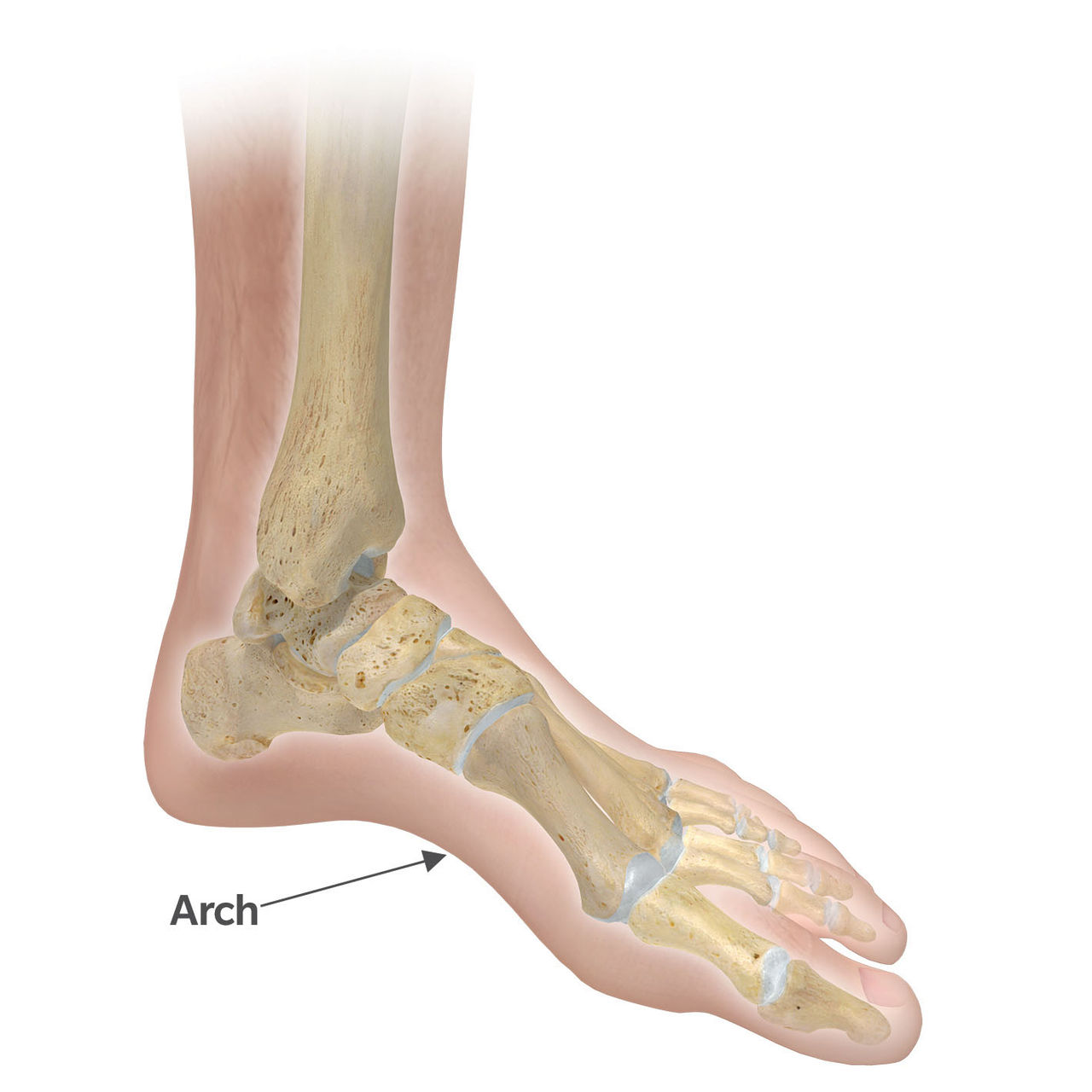For many people, deciding which pair of shoes to put on in the morning requires no thought beyond what will go with their outfit or activity for the day. But for people with ankle and foot pain, choosing the right (or wrong) pair of shoes can make a huge impact on their ability to function comfortably throughout the day.
Our shoes can affect many parts of our body. Foot alignment and position have a significant "upstream" effect on the rest of the musculoskeletal chain, including the knees, hips, pelvis, back, and neck.13 So, anyone looking to manage or avoid chronic joint pain, or improve their posture, would be wise to select their shoes carefully.
If you've ever wondered how your footwear may be impacting your body in the short- and long-term, check out these 3 common features and the affect they can have.
1. Arch support
The middle of the underside of your foot is known as your arch. It's made up of a combination of bones, ligaments, and thick band of tissue called the plantar fascia. Your arches help you withstand and transmit forces safely as you bear weight.1,2

A shoe with too much, or too thin of an arch support or padding can alter the way weight passes through your arches. Conversely, wearing a flat shoe with no support may stress and stretch out your arch, which can lead to collapse (especially if you're doing higher impact activities like running).1,2 Both issues may lead to ankle instability and an increased risk of ankle sprains,1,2 as well as increased stress and twisting forces on the knees and hips.10,11 Inadequate arch support is also a major contributor to plantar fasciitis, a common type of heel pain caused by irritation to the plantar fascia.3
2. Heel height
High heels can force more weight to pass through the balls of your feet, which may increase strain on the joints and tissues there. High heel height can also stress the front of your knee, since your center of gravity shifts forward relative to your quadricep muscles.4 One study shows that women who wear high heels often have a greater risk of knee osteoarthritis!5
High heels also tend to promote gait instability, shorten stride length, decrease walking speed, and increase compression in the hips and spine because the muscles have to work harder to help a person remain stable.6
High heels may also cause your Achilles tendons to shorten, leading to altered stress on the knee joint and an increased risk for ankle and calf pain or injury.7
3. Toe box
Your toes help you maintain stability as you walk. If they're squished into the front of your shoes, your toes won't be able to flex and move properly. Over time, this can lead to deformities like toenail damage, corns, hammer toes, mallet toes, and bunions.8 Aside from causing cosmetic problems, these deformities can lead to long-term pain and may require surgery to correct. On the other hand, shoes that are too wide may lead to unnecessary sliding and shifting of the foot. This could also lead to toe discomfort or blisters.
According to Podiatry Today, the rate of total ankle replacements has increased over the past couple decades.9 Knowing how your shoes affect your body is an important step in managing your pain—if not avoiding pain and dysfunction altogether. For specific questions regarding your footwear needs, talk to a podiatrist today.
References
- Bumgardner, W. (2020, Apr 24). Foot Problems From Bad Inserts. Verywellfit. https://www.verywellfit.com/bad-shoes-or-inserts-3435602.
- The Best and Worst Shoes for Your Feet (n.d.). Piedmont Healthcare. https://www.piedmont.org/living-better/the-best-and-worst-shoes-for-your-feet.
- Cobb, C. (2019, Nov 8). Everything You Want to Know About Plantar Fasciitis. Healthline. https://www.healthline.com/health/plantar-fasciitis#causes.
- 5 Tips for Preventing Knee Pain (n.d.). Rush University Medical Center. https://www.rush.edu/health-wellness/discover-health/preventing-knee-pain.
- Titchenal, M., et al. (2014, Dec 22). Effects of high heel wear and increased weight on the knee during walking. Journal of Orthopaedic Research. 33(3): 405-411. http://onlinelibrary.wiley.com/doi/10.1002/jor.22775/abstract.
- Richie, D. (2018). Heel Elevation In The Shoe: What The Literature Reveals. Podiatry Today. 31(11): 30-41. https://www.podiatrytoday.com/heel-elevation-shoe-what-literature-reveals.
- Rettner, R. (2010, Jul 17). High Heels Reshape Leg Muscles, Create Pain When Not Worn. LiveScience. https://www.livescience.com/10738-high-heels-reshape-leg-muscles-create-pain-worn.html.
- Hammertoe and Mallet Toe (n.d.). Mayo Clinic. https://www.mayoclinic.org/diseases-conditions/hammertoe-and-mallet-toe/symptoms-causes/syc-20350839.
- Brandão, R., et al. (2018, Mar 19). Current And Emerging Insights On Total Ankle Replacement. Podiatry Today: 31(4): 36-43. https://www.podiatrytoday.com/current-and-emerging-insights-total-ankle-replacement.
- Gross, K., et al. (2012). Flat Feet Are Associated With Knee Pain and Cartilage Damage in Older Adults. Arthritis Care Research (Hoboken). 63(7). https://www.ncbi.nlm.nih.gov/pmc/articles/PMC3087845/?report=reader.
- Sheehan, J. (2009, Jun 22). How to Find Shoes That Can Ease Knee Pain. Everyday Health. https://www.everydayhealth.com/knee-pain/knee-pain-shoes.aspx.
- Arches of the foot (2020, Jun 20). Wikipedia. https://en.wikipedia.org/wiki/Arches_of_the_foot
- Alignment 101: Alignment Tips for Foot Health (2018, Jun 22). Advanced Balance. https://www.advancedbalance.org/blog/alignment-101-foot-alignment-points



